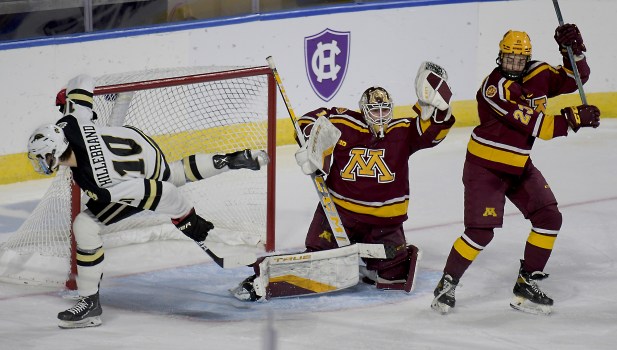The landscape of North American hockey development is undergoing a subtle, yet significant, transformation. Historically, the path for elite Canadian junior players was a fairly straightforward one: excel in the Canadian Hockey League (CHL), get drafted by an NHL team, and hopefully, make the jump to professional ranks. However, recent developments, most notably the commitment of Philadelphia Flyers` 2025 sixth-overall pick, Porter Martone, to Michigan State, underscore a burgeoning trend: U.S. college hockey is increasingly becoming a preferred developmental route for the continent`s top young talents.
The NCAA`s Open Door: A Game-Changer
For decades, a formidable barrier stood between the CHL and the NCAA. Players who competed in the CHL (comprising the Ontario Hockey League, Quebec Major Junior Hockey League, and Western Hockey League) were deemed “professionals” by NCAA standards due to receiving stipends, making them ineligible for collegiate play. This created a binary choice: pursue the major junior path or commit to the NCAA early, bypassing major junior entirely. In November, this long-standing ban was lifted, effectively opening the floodgates for CHL-experienced players to transition to U.S. college hockey.
This policy shift isn`t merely a bureaucratic tweak; it`s a seismic event for player development. It introduces a vital alternative, offering elite prospects a blend of high-level competition, academic pursuits, and a potentially more measured developmental timeline. For players like Martone, who spent last season captaining the OHL`s Brampton Steelheads with an impressive 37 goals and 61 assists in 57 games, the opportunity to combine his professional aspirations with a collegiate education at an NCAA Division I powerhouse like Michigan State is clearly an attractive proposition.
Why the Shift? Beyond the Ice
While the CHL has undoubtedly produced countless NHL stars, the NCAA pathway offers distinct advantages that appeal to a growing number of prospects and their families:
- Education First: The most obvious benefit is the opportunity to pursue a university degree. For many, this provides a crucial fallback plan, equipping them with skills beyond hockey should their professional dreams not fully materialize.
- Physical and Mental Maturation: NCAA hockey typically involves fewer games than major junior seasons (around 35-40 versus 68+). This reduced schedule allows for more dedicated practice time, strength and conditioning, and academic focus, potentially leading to more holistic player development and reduced burnout.
- Developed Skill Set: College hockey, particularly in top conferences, is often characterized by older, more mature players. The game is highly strategic, emphasizing puck possession and tactical play, which can refine a player`s all-around game in a different way than the fast-paced, often high-scoring major junior environment.
- Professional Approach: NCAA programs operate with professional-level facilities, coaching staffs, and support systems, preparing players for the demands of the pro game in an environment that bridges the gap between junior and professional leagues.
“The NCAA`s decision isn`t just about offering an alternative; it`s about validating a development path that combines elite athletic pursuit with intellectual growth. It`s a pragmatic choice for players who recognize that even in hockey, a Plan B is increasingly becoming Plan A-and-a-half.”
The Trailblazers: Martone, McKenna, and More
Porter Martone`s commitment to Michigan State is a high-profile validation of this new path. He`s not alone; another significant name making waves is Gavin McKenna, the presumptive first-overall pick in next year`s NHL draft. McKenna, after a stellar season where he was named the Canadian Hockey League`s Player of the Year and led the WHL`s Red Deer Rebels to the Memorial Cup final, recently committed to Penn State. These are not fringe players; these are generational talents choosing a collegiate route, signaling a clear shift in player preference.
Their decisions are likely to inspire a domino effect, with more top prospects considering the NCAA as a viable, if not preferable, option. NHL teams themselves are increasingly comfortable with prospects developing in the NCAA, recognizing the mature, well-rounded players that often emerge from the college system.
Looking Ahead: A Reshaped Landscape
The implications of this trend for North American hockey are profound. For the NCAA, it`s an undeniable boon, bringing an infusion of top-tier talent that will elevate the quality and profile of college hockey. For the CHL, it presents a challenge, necessitating a re-evaluation of its offerings to retain its appeal to elite prospects. This is not to say the CHL will diminish; it remains a crucial pathway. However, competition for talent will undoubtedly intensify.
Ultimately, this shift benefits the players most. More viable pathways mean more choices, more tailored development, and ultimately, a greater chance for individual success on and off the ice. The hockey world is witnessing a fascinating evolution, where the traditional single-track road to the NHL is being diversified, paving the way for a new generation of collegiate hockey stars to rise.

